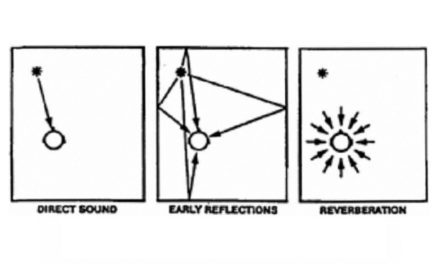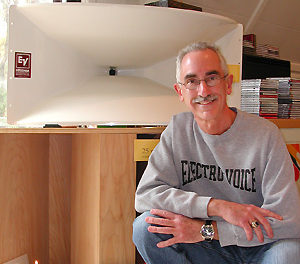by David Lloyd ben Yaacov Yehuda Klepper, student at Yeshivat Beit Orot, Jerusalem, ddaveklepper1@gmail.com
Forward by Chris Foreman
Designers who consult on acoustics and audio systems in worship spaces understand the importance of achieving audibility and clarity of speech while respecting the beliefs and traditions of each religion. And, while much has been written about this balance in Christian churches, fewer resources are available for designers consulting with other faiths.
In this paper, consultant David Klepper provides a valuable addition to the literature by examining methods of achieving audibility and clarity of speech in Orthodox Jewish synagogues while respecting the specific beliefs and needs of this faith.
In Sections 1 and 2, Klepper provides information about the limitations that must be observed regarding electronic amplification in Orthodox synagogues. In Sections 3-5, he discusses electronic and air-only amplification systems that may be able to achieve the goals of audibility and clarity while respecting these limitations. In Sections 6 and 7, he adds acoustic solutions which may provide sufficient audibility and clarity without the need for active amplification. And, in Section 8, he briefly mentions other acoustic issues that can hinder audibility or clarity and suggests how the solutions presented in this paper could potentially be applied to other faiths.
The reader is also directed to Klepper’s innovative “Clarity Canopy” concept in Section 7 which could be a solution for meeting rooms, outdoor areas or historic buildings which may have poor electric power availability or significant restrictions on remodeling.
1. Introduction
The ban on use of electronic sound reinforcement in synagogues is based on the Hebrew Scriptures’ (TANA”CH) ban on working on the Sabbath, and this ban on working is both in the second book Sh’mot in Hebrew and Exodus in English, and in D’vorim/Deuteronomy as one of the Ten Commandments. In both books, as well as VaYikra/Leviticus, and BaMidbat/Numbers, more details of this prohibition are presented, and these are extended in part to major holidays.
The codes of Jewish Law, as contained in the Talmud and later commentaries, allow continued use of fire, but not starting or stopping the fire during the Sabbath and major holidays. Speaking into a microphone normally starts and stops electric current, as well as producing motion analogous to an electric generator and motor. Also, the strictest interpretation indicates any sound that doesn’t reach the ear directly via air from the mouth of the talker, also represents work. The strictest interpretation is overcome by a novel air-only amplification system that requires enormous research to reach the quality of electronic amplification, and thus has successfully been used only for overflow coverage outside the worships space itself and very large rooms. Less strict interpretations have allowed systems that apparently just vary current but not interrupt in to be used in some Orthodox synagogues. This paper attempts to present the full menu of issues, their possible solutions, and some indications where future research may simplify a few of the problems. Some architectural solutions are also presented, including one that can substitute for a good portable sound amplification system
2. The Ban on Using Amplification on the Sabbath
The ban on working on the Sabbath is found in Exodus 20:9 and Deuteronomy 5:13, where it forms part of the Fourth of the Ten Commandments, the Commandment instructing Jews to observe the Sabbath1. This commandment was so important in Biblical times that even the construction of the portable sanctuary in the desert, as Israelites moved from Egypt to the Holy Land, was interrupted for rest on the Sabbath, and similar rest was observed during the construction of both the First and Second Temples. The requirement to avoid work on Sabbath is not applied to a Doctor’s mission to save lives, an exception extended to saving lives in general (non-Jewish as well as Jewish lives) and rescuing Holy Books from fire. Examples of how this ban is interpreted is the Orthodox prohibition of riding a horse or any wheeled vehicle, starting a voyage on a ship or airplane (although once on a ship most authorities permit continuing the voyage but not debarking until the Sabbath is over), using electric wheelchairs (some permit this), and avoiding the use of elevators, with elderly and infirm using elevators that stop at every floor and are heavy enough so electric current consumption is not materially affected by the number of people carried. Again, if saving a life or lives requires the use of a wheeled vehicle or regular elevator, the exception, not the rule, applies.
Much of this material can most easily be located in Rabbi Levi Yitzhak Halperin’s books on Sabbath and Electricity. The Rabbi is head of the Institute of Science and Halacha in Jerusalem’s Beit Vaghan neighborhood2. (Orthodox Judaism has two very basic major traditions, the Central and Eastern European, which is Ashkenazi, and Mediterranean, which is Sephardic.) The question of using a microphone on the Sabbath is discussed thoroughly, and objections include the following:
a. Talking into a normal microphone starts and stops electric current, normally not just at the beginning and end of speech, but even the electrical representation of the sound of the voice speaking involves many, many zero-crossings as voltage and current go from positive to negative.
b. Operation of a normal microphone involves a moving part analogous to the movement of an electric motor’s armature, the difference only that it is back and forth motion and not rotary motion.
c. In the past, electronic amplification involved the use of vacuum tubes, and since heat generation with a glow similar to fire is essential to their operation, use of such amplifiers was considered analogous to adding and subtracting fuel from a fire. There is general agreement that use of transistors and other solid state devices has overcome this objection.
d. The sound from a loudspeaker is not to be considered the real sound of the person talking, but rather a representation of the sound, much as a painting or photograph or statue is a representation of the physical aspects of a human being. And creating such representations is definitely prohibited on the Sabbath.
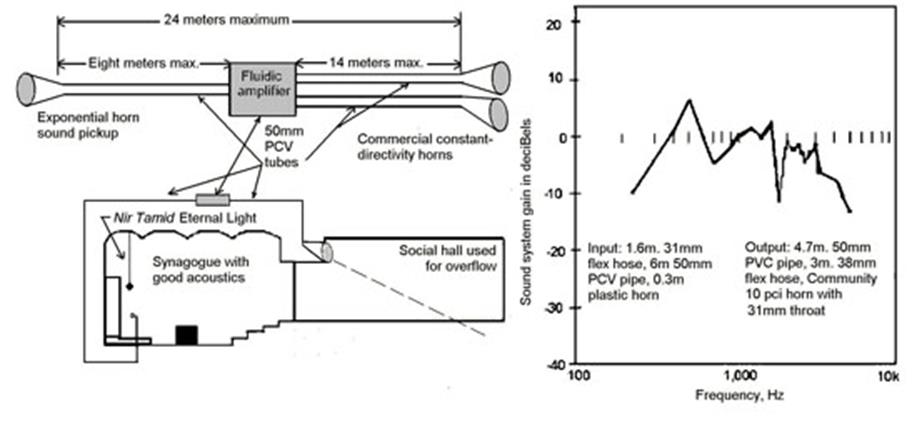
Figure 1: The Air-Only Amplification System developed by Defense Research Technologies4
3. The Air Only System
Air conditioning systems are generally allowed on the Sabbath, including the use of preset electric timers to turn them on and off at specific times. (Lights may be controlled similarly.) The United States Military funded the development of control systems that do not use electricity, where the development of the science of fluidics permitted a small jet of air to control the flow of a much larger stream of air. The firm Defense Research Technology of Silver Springs, Maryland, further developed this technology to allow real time operation at audio frequencies, and turned it into a practical scheme for sound amplification, but with limitations (Figure 1). The author has been party to the system’s demonstration, but the quality is somewhat reminiscent of what the earliest mechanical phonographs produced before electric recording, or the earliest public address systems before the millions of research dollars spent by RCA. Western Electric, and Bell Telephone Laboratories, on film recording, microphones, amplifiers, equalization, loudspeakers, and mixers and other controls, to develop talking motion pictures. This research in the 1920’s and 1930’s formed the basis of the excellence that electronic reinforcement had already reached by the middle of the 20th Century, with some 60-year-old sound systems still giving good service today. One questions whether similar money will ever be forthcoming for an air-only system on the basis of its only applicability being Orthodox Synagogues. Meanwhile, the air-only technology can prove useful for those cases where overflow coverage is provided for those who wish to hear the synagogue service outside the actual room where it is taking place, as well as very remote listeners in very large spaces (Figure 2).
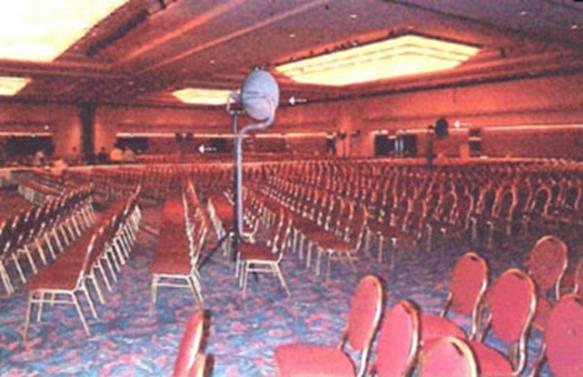
Figure 2: An Air-Only Amplification System for High Holy Day Services’ at Anaheim Hilton Grand Ballroom
Since air is used to modulate air, the thought is that the original material of the voice is maintained, with authenticity rather than representation of the material at the listener’s ears. The fan system or air compressor operating the system and powered by electricity operates continually through the Sabbath or is controlled by a time clock like an air-conditioning system, and its current draw is not affected appreciably by the voice amplification.
4. Single-Sided Amplification
The Zomet Institute is an organization located in Gush Emunim under the direction of the Sephardic Chief Rabbi. Interpretation of the Fourth Commandment with respect to fire is slightly more permissive among Sephardic Jews. An Ashkenazi Orthodox Jew will keep food on a still-burning fire or hotplate into the Shabbat until he needs it and then remove it for eating. But he is not supposed to return the food to the hotplate or fire. A Sephardic Jew has this permission. A second point is that the consideration of the motion of the air from a loudspeaker as a representation and not the real voice of the person talking is a matter of interpretation, and Zomet has interpreted this permissively. For example: Ashkenazi rabbis suggest that one call sick friends in hospitals to read the Book Esther to them on the Purim Holiday, so these friends can observe the commandment of hearing the story read on the holiday. If hearing a telephone complies with this commandment, certainly the sound of a high-quality sound system can be regarded as authentic.
However, this is the author’s interpretation of the Zomet position, and the reader can be referred to Volumes II, IV, and V of Cross-Roads, a series of books of the Zomet Institute on the relationships between Jewish Law or Halacha, and Technology.3 The chiming of a clock is permitted on the Sabbath, and usefully tells Jews when it is time to pray. So a sound system with controls and all adjustments left untouched, in fact locked and secured during Shabbat, can be compared with the clock’s chiming as also useful. The problem of starting and stopping electric current is then solved by use of a capacitor microphone. This requires a polarizing voltage and a small amount of power for a preamplifier at its base, so the audio signal is superimposed on a larger continuous direct current voltage and current, and there are no zero crossings at all, only variation in an otherwise steady direct current voltage. Also, the analogy with a dynamo, or motor or generator does not apply in any way. Other safeguards might include battery powering of the amplification. With the replacement of vacuum tubes by transistors, the problem seems adequately solved, and some Ashkenazi synagogues, as well as Sephardic, have adopted this reasoning, and more continue to do so. (Figure 3)3,5
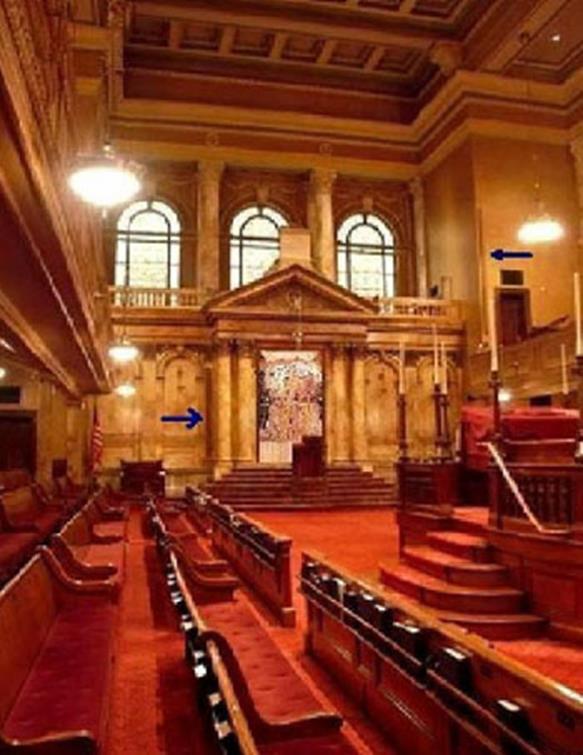
Figure 3: Interior of Congregation Shearith Israel’s Main Synagogue. The 111-year old fifth building of North America’s oldest Jewish congregation, dating from 1654, and the first congregation to employ Zomet’s guidelines for Sabbath sound amplification. It now uses four of the loudspeakers systems illustrated in Figure 5, one on each side of the center Ark (containing the Torah Scrolls) for the main floor seating, and one at the front of each side balcony serving that balcony and the rear balcony.
The objection was raised to the author about a similar problem existing at the loudspeaker or loudspeakers. Perhaps the lack of close contact between the Rabbi and the loudspeaker that exists between him and the microphone disguises this problem. It exists in the first sound systems that were installed in accordance with Zomet guidelines. The author suggested one of several possible solutions, as shown in Figure 4, involving the use of a large capacitor in parallel with a battery that assures continues dc current in one side of the loudspeaker line, admittedly a clumsy approach and one that de-rates the acoustic power of the system by six deciBels, or to one quarter the actual sound power without such an effort.4 This reduction in maximum sound output should not be a problem in a speech-only system, however. I am uncertain whether this approach ever was put into practice.
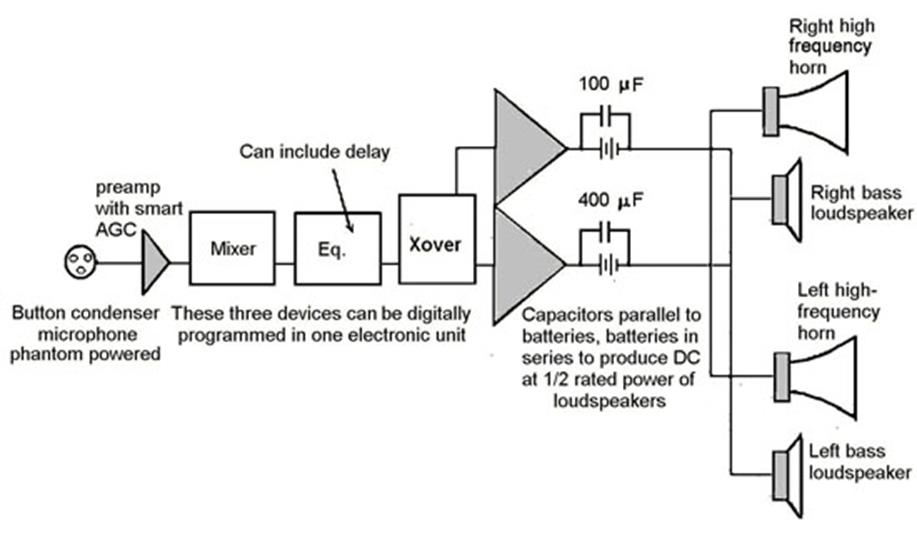
Figure 4: A Single-Sided Amplification System with constant current in both microphone and loudspeakers.4
More modern loudspeaker systems can avoid this issue to an important extent. The newer systems in most synagogues use computer steered array loudspeaker systems, where each loudspeaker system contains many small loudspeakers, each with its own attached amplifier, microprocessor, and digital-to-analogue converter. The precise delay to a fraction of a millisecond, signal level, and frequency response are controlled to shape the coverage pattern of the loudspeaker system to cover the congregation and minimize energy on unoccupied surfaces, including walls, and to keep that coverage pattern constant over the entire audible frequency range. Once the loudspeaker and its associated amplifier are considered as a unit, the problem disappears, because the whole system is powered by continuous voltage and current, and again the audio signal just varies the constant direct current. This type of loudspeaker system was pioneered by Intellivox and Eastern Acoustics Works, but is now widely available from other manufacturers (Figure 5). The first Orthodox synagogue to apply Zomet guidelines has been re-equipped with such loudspeakers, in this case going from an inconspicuous installation to nearly invisible, and with improved performance (Figure 3).
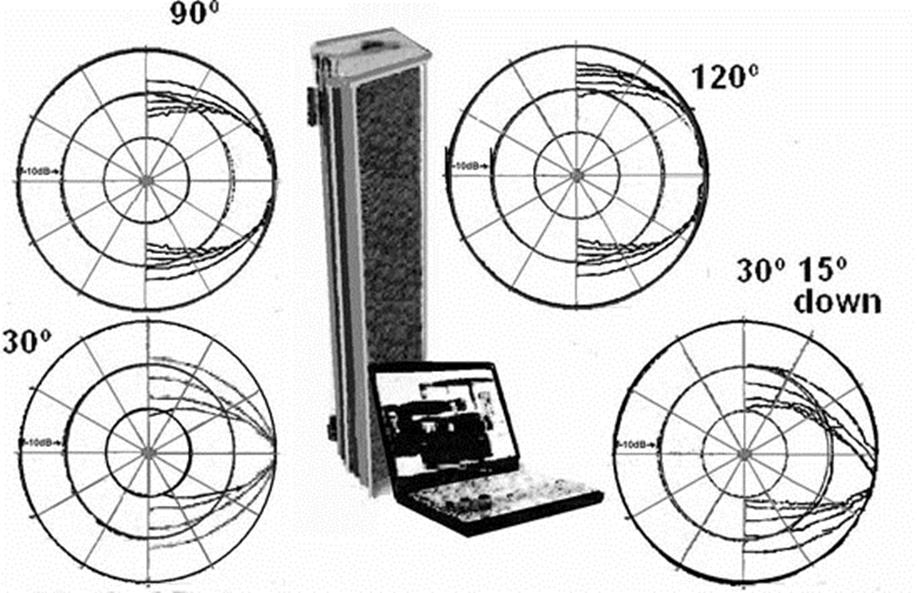
Figure 5: Steerable Array Loudspeaker System with some of the almost infinite number of vertical coverage patterns available by computer control.
However, purists may contend that there is still interruption of current and zero crossings and motor-like motion in the individual loudspeakers. This problem can be solved by use of the capacitor loudspeakers that were at one time available from both KLH and Janzen, with both manufactures’ designs available from Janzen today. These loudspeakers are not inexpensive, but I consider them the ultimate in quality. These are the reverse analogue of capacitor microphones, with diaphragms that moved millimeters with variation in a constant dc voltage and current. A new development from China, Nanotube loudspeakers, where the diaphragm actually does not move but moves air molecules by instantaneous and great changes in temperature in response to variations in current, and which requires a direct current bias to avoid frequency doubling, may also solve the problem if problems of efficiency can be solved.6
5. Objections by Rabbi Levi Yitzhak Helperin and Rabbi Moshe Feinstein2,5
Remaining is Rabbi Helperin’s objection that the sound of any loudspeaker is not actually the sound of the person talking. True, but the sound of one of any of the sound systems now in use and installed in accordance with Zomet guidelines are faithful to the sound of the person talking, with many operating in a mode where anyone not told of the use of amplification and familiar with the voice of the lecturer would not notice the use of amplification at all. This is not true, at the present time, of the air-only system, and massive research is required to address this air-system problem.
One possible answer to the objection might possibly be the use of eyeglasses. Physicists know that the motion of electrons in glass differs in speed and amplitude than it does in air, so the light ray in glass is different than it is in air. So the light ray changes as it enters the lens and changes again when it leaves. Is it thus the same light ray as emitted from the source? I and many Jews use our eyeglasses when called to read from the Torah in an Orthodox Synagogue, and no one would deny us that honor because we wear glasses. Yet, to compensate for my eyes’ deficiencies my eyeglasses deliberately distort the images I view, in contrast to the electronic amplification system, which also involved two conversion interfaces as sound enters and leaves, and which provides amplification true enough to the sound source that experienced listeners can be entirely unaware that amplification is in use.
Rabbi Moshe Feinstein was a great Torah sage who arrived in the United States escaping the Holocaust and who was one of the most responsible, through teaching and leadership, for increasing religious observance among North American Jews in the post WWII period, so his objections are not to be taken lightly. However, technology has progressed since he was an active teacher, and the following points are familiar to all sound and acoustics and noise control professionals.
a. Modern electronic amplification equipment generally operates “fail-safe.” If problems develop, equipment shuts down rather than producing any noise. One Rabbi’s experience with a building dedication by a great electronics firm where the sound system went into feedback is not an appropriate comment. Sound systems in synagogues are, or should be, installed carefully and tested thoroughly before actual use, whereas that building dedication system was a temporary one, probably set up just moments before its use was required.
b. Modern electronic amplification equipment is stable. It can survive changes in temperature and humidity and continued operation without altering its characteristics and this avoids unwanted ringing and feedback.
c. The kind of equipment now being installed, that developed by Doran Audio’s Intellivox and Eastern Acoustics Works, is not specifically intended for Orthodox Synagogue use, but also has the power capacity for music groups, including popular music in spaces as large as larger synagogues. For this reason there is a parallel with Sabbath elevators. While operation of these systems for popular music groups would certainly result in large changes in the current drawn from the power line, and thus be unacceptable to many rabbis, use for the spoken word only barely produces a miniscule ripple in the amount of current drawn, any more than opening or closing doors or windows would have as affecting the draw of current by the air-conditioning system.
d. The correct design, installation and adjustment of a modern system can result in one that is essentially part of the architecture, unnoticeable as amplification by anyone on the basis of one’s ears alone.
6. Architectural Solutions
The desire for increased intelligibility in large synagogues predates the development of sound amplification. Many old synagogues thus had canopies over the main position for the rabbi addressing the congregation, as well as raising him on a platform above the main floor. A modern interpretation of this ancient answer is shown in Figure 6. Use of a simple sloped glass panel will not appreciably change the appearance of the synagogue interior. Acoustically, energy that may otherwise undergo multiple reflections between wall and ceiling, and thus contribute to reverberant energy reducing intelligibility, is instead reflected to the congregation, arriving at their ears soon enough after the direct sound to aid intelligibility.
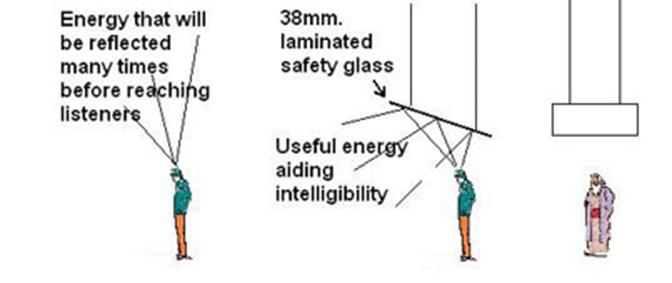
Figure 6: Modern Canopy to Aid Intelligibility
These matters are further discussed on this website in the paper “An Autobiographical Assessment of the Importance of the Early-to-Reverberant Sound-Energy Ratio, ‘Clarity,’ in Speech Acoustics.” Also discussed there is the situation of worshippers behind the Hazan/Cantor at the central reading desk, and the applicable improvements available from experience with “theaters-in-the-round.”
7. A portable architectural Solution
A request by a synagogue for instant help as quickly as possible was the impetus to develop a portable architectural solution. The goal was one that would comprise elements that could easily fit through normal doorways, be assembled and disassembled without special tools, and provide the kind of improvement the canopy solution of Figure 6 and Par. 6 above provide. Figure 7a,b shows the resultant design. Modifications can depend on the geometry of the pew area and esthetics, with the design shown applicable to a seating area somewhat wider than deep. The same device can be used for outdoor services. In a reverberant space, energy that would produce reverberation can produce clarity, and in an overly-absorbent “dead” space the reflected energy supplies a needed improvement in loudness.
Since it is merely an assembled piece of furniture, no building permit is required, and there is no modification to the building itself. Thus it may be applicable in many situations outside of synagogues where a building is “landmarked,” and any modifications to the building are prohibited. Materials other than wood are also practical, and perhaps some very talented industrial designer will develop a variant of aluminum and glass that can use telescoping posts and basis and a reflector that forms the outside of a large suitcase or trunk housing all other elements and light enough to be carried by one arm.
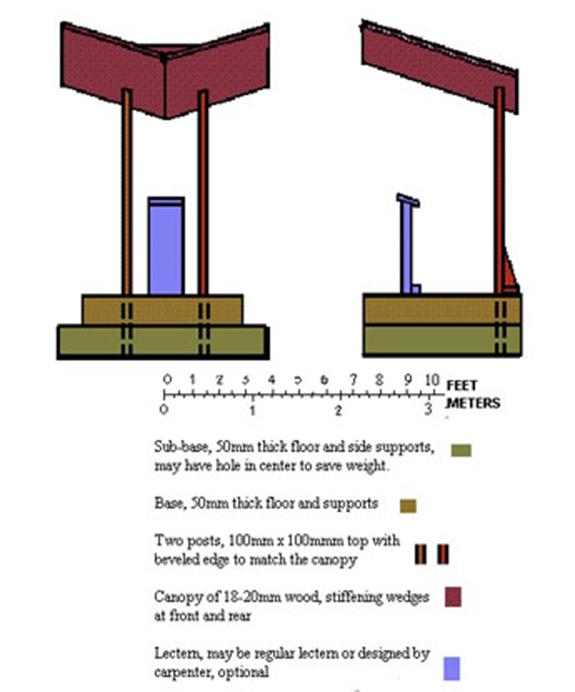
Figure 7a: Five or six-piece portable Clarity Canopy for natural reinforcement of a lecturer.
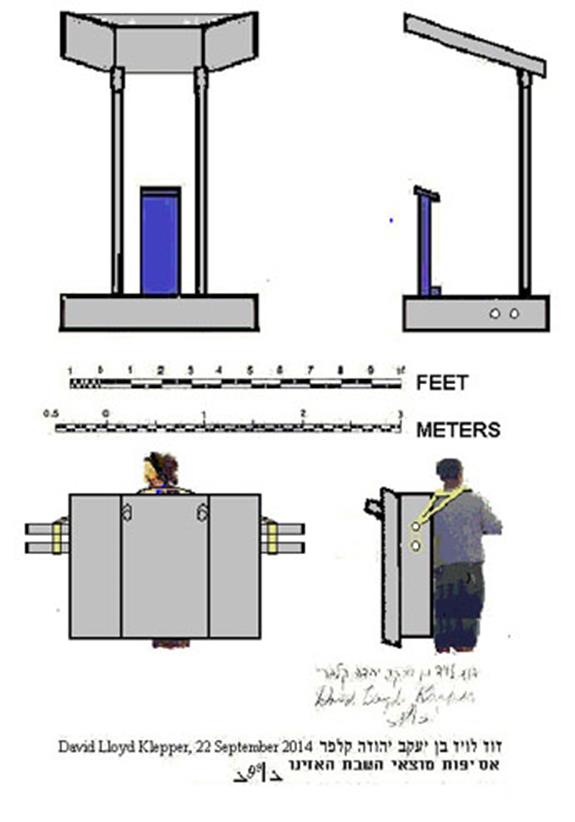
Figure 7b: A possibly easier to construct wood version, and a possible lightweight aluminum version that may be carried by one person
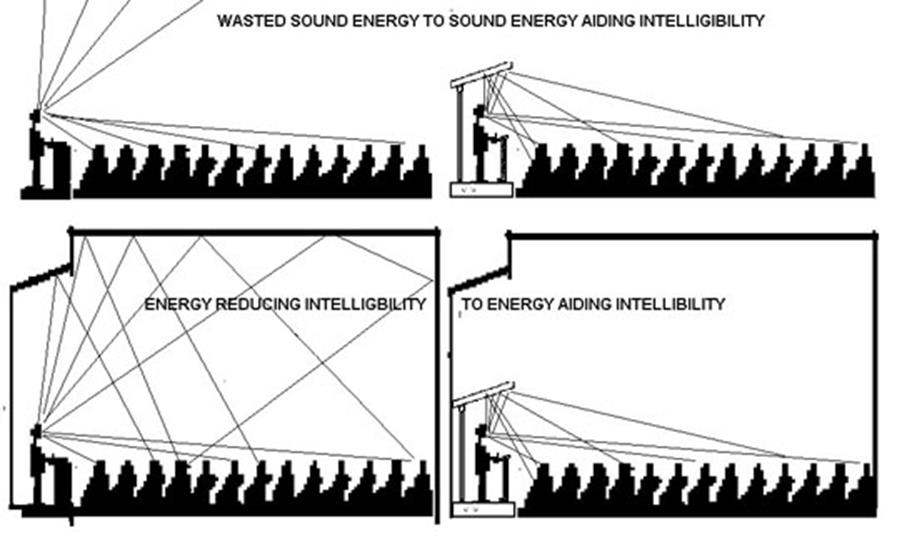
Figure 8: An advertisement drawing for any manufacturer realizing the concept
8. Other factors influencing acoustic effectiveness
In a long consulting career in North America, the author was called in many times for building problems where the owner thought a new sound system was needed. Most of the time, the problem appeared otherwise. Most frequently, the air conditioning and heating system required silencers or vibration isolators, or reduced air velocities at grilles, or a combination of these measures. On other occasions, a rear wall echo needed treatment with diffuser or sound-absorbing panels. Each synagogue, like any worship space, is unique, and a Zomet-approved sound system or air-only system should just be one of many possible measures the acoustical engineer should consider.
Only Orthodox Synagogues are concerned with the ban on amplification. Congregations of the Conservative, Reform, and Reconstructionist Movements never observed this ban. The author is aware of prohibitions against use of modern technology in one form or another by certain Christian populations, such as the Amish in Pennsylvania in the United States. Are there Muslim groups that prohibit certain aspects of modern technology other than banned entertainment? There are many Orthodox Jewish populations that have similar entertainment technology prohibitions. The use or non-use of TV sets in our Yeshiva is not even discussed. All students know that no student TV sets are in use in any Orthodox Yeshiva in Jerusalem. But now computers and the internet can provide an alternative for those desperate for entertainment.
References:
1. The Hebrew Bible, what Christians term “The Old Testament”, Shaimot/Exodus 19:7-10, the second of the “Five Books of Moses,” or the Torah or Humish in Hebrew, the latter from the Hebrew word for five. There are many, many references to not working on the Sabbath, indeed one can start with the Creation Story in BiRashit/Genisis, where the Eternal rested on the Seventh Day. The best approach to all the basic sources with reference to the subject of this paper is through the following two references and/or through study with a nearby observant rabbi.
2. Shabbat and Electricity, Compiled by Rabbi Dovid Oratz from writings by Rabbi Levy Yizhak Halperin, Institute for Science and Halacha, Jerusalem 1993, p. 54-64.
3. Cross-Roads, Zomet Institute, Alon Sh’vut, Gush Emunim, Israel, 1988-1999: Vol II p. 7-28, Vol IV, p. 7-13, Vol V, p. 9-44. Authors include Prof. Zev Lev, Rabbi Shaul Yisraeli, and Rabbi Yisrael Rozen
4. “A Different Angle,” Sound and Video Contractor, 17:1, January 1999, David L. Klepper
5. Tradition, magazine of the Orthodox Union, New York, NY, USA “Communications on the use of Microphones,” Rabbi Manuel M. Poliakoff, Vol 5:Issue 1, 1962, p. 129-131, and 14:3, 1974, p.133-138 (for); Rabbi Edward Burnys, 15:1-2, 1975, p. 220-223, Rabbi Tovia Basser, 15:1-2, 1975, p. 217-220. “Halachich Survey, Use of Microphones,” Rabbi David J. Bleich, 12:1, 1971, p. 95-100 (against, the last most comprehensive).
6. “News from China,” Physics Today, 62:1, January 2009, page 17, Nanotube loudspeakers
About the Author
David Lloyd Klepper is currently a student of Rabbinics at Yeshivat Beit Orot, Jerusalem, Israel, having moved to Israel in 1996 from his position as President of Klepper Marshall King, White Plains, NY, Acoustical Consultants, and as Adjunct Professor of Architectural Acoustics at City University, New York City. Before 1971 he was a senior consultant at Bolt Beranek and Newman, starting his consulting career there in May 1957. He received his SM and SB degrees in Electrical Engineering from MIT, and between times served as Assistant Audio-Radio Member of the PsyWar Board at Fort Bragg, NC, during the Korean conflict, leaving active duty as a 1st Lt. He provided acoustical advice for over 200 worship space buildings, including the National Presbyterian Church, Washington, DC, St. Thomas Church Fifth Avenue, New York City, the Capetown, South Africa, Anglican Cathedral, River Road Baptist Church, Richmond, Virginia, Young Israel of Southfield, Michigan, and Boston’s Holy Cross Cathedral. In this capacity, he was a pioneer in application of digital delay and electronic simulation of reverberation in worship spaces, and pew-back speech reinforcement. Publications include 40 papers in professional journals, a coauthor with Professor Kleiner and Father Rendell Torris of the book Worship Space Acoustics, JRosspub.com., and Editor of the two Sound Reinforcement Anthologies of the Audio Engineering Society. He is a fellow of both the Acoustical Society of America and the Audio Engineering Society, past Emeritus Board Certified member of the Institute of Noise Control Engineering, and a member of both the American Guild of Organists and the Organ Historical Society. He also belongs to a number of railroad and public transit interest organizations. You may contact Klepper at ddaveklepper1@gmail.com.
Editor’s Note
Two related papers by David Klepper are posted on this website:
“An Autobiographical Assessment of the Importance of the Early-to-Reverberant Sound-Energy Ratio, “Clarity,” in Speech Acoustics”, by David Klepper, may be found here.
“The Early-To-Reverberant Sound-Energy Ratio In Concert Hall Acoustics”, by David Klepper, may be found here.



